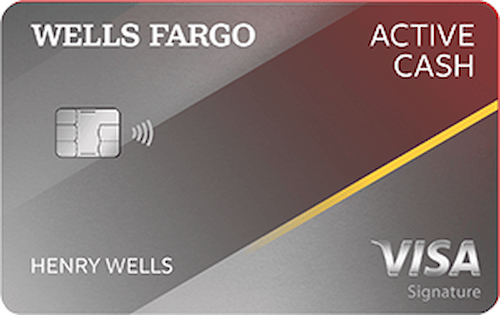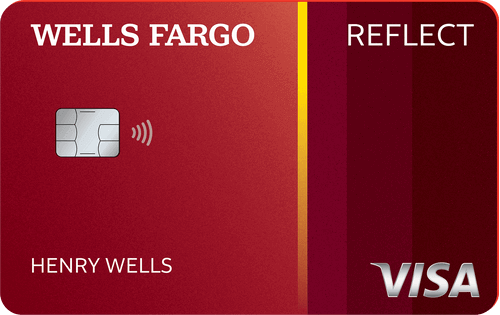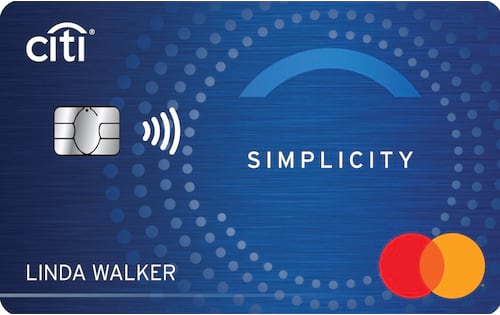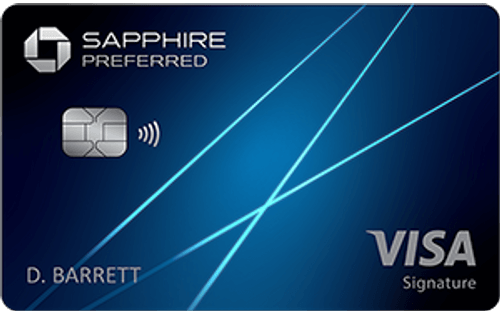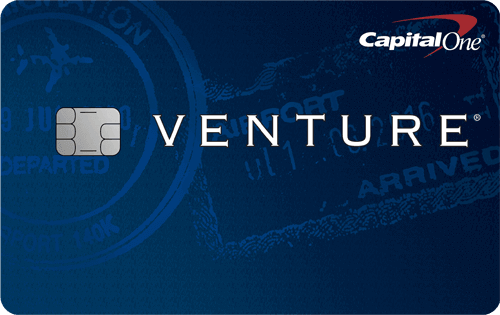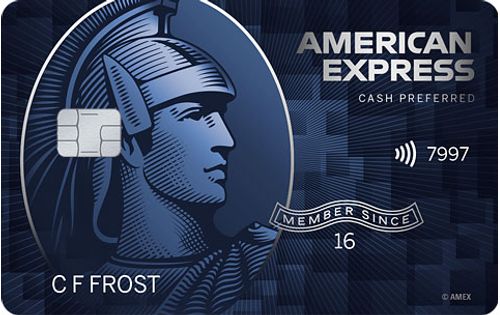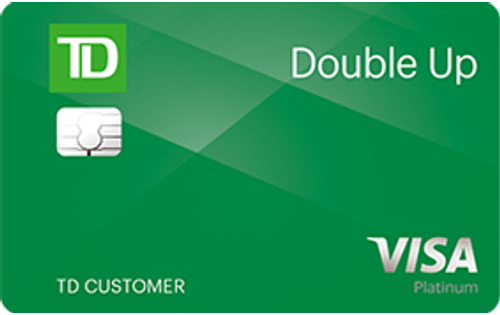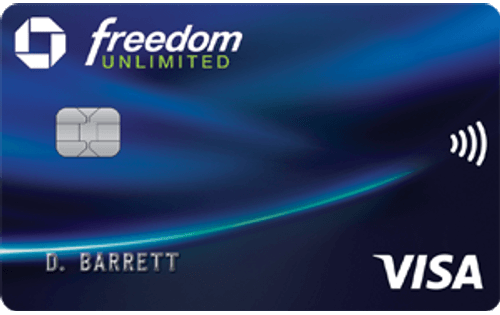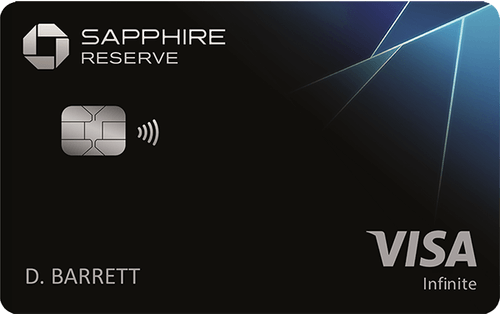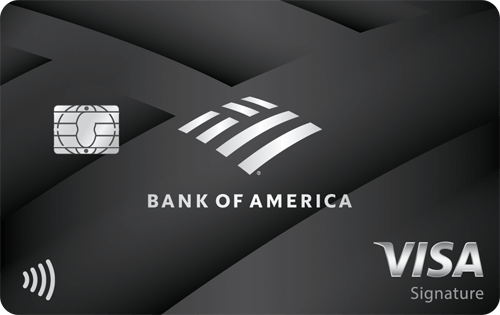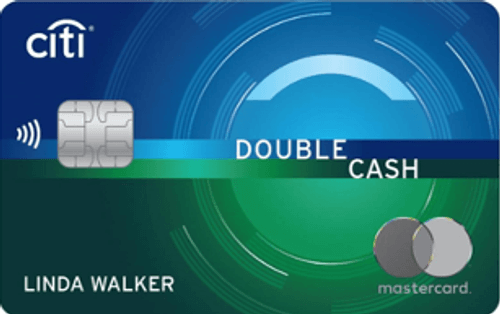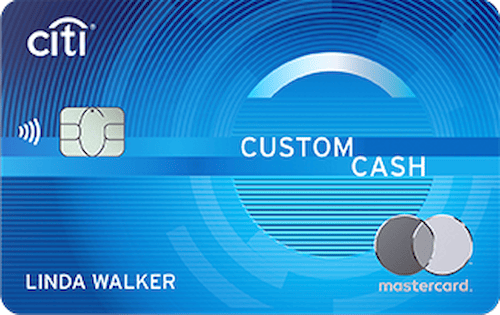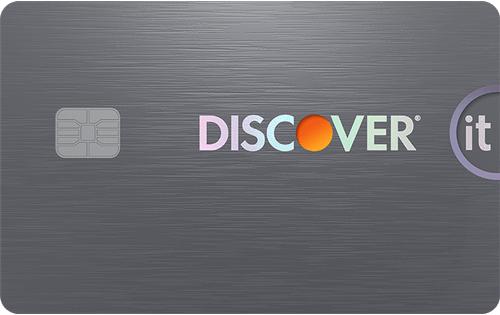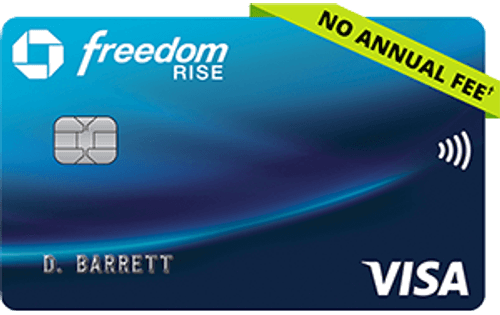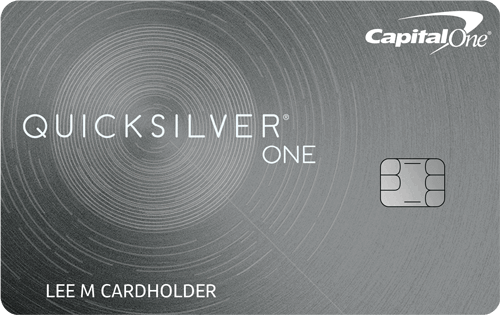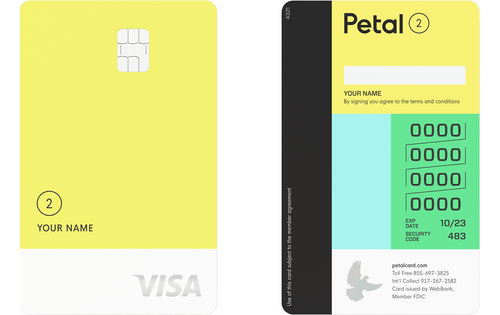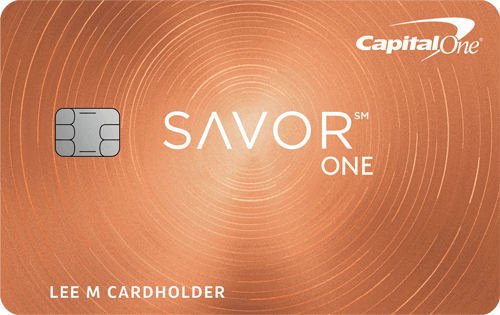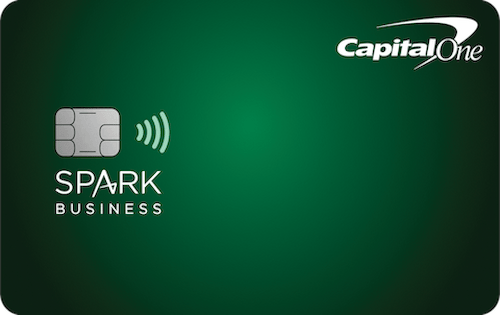- Best Credit Cards of 2024
- Best credit card by credit score
- Best credit card by credit card company
- Top rated credit cards by users
- Methodology
- Sources
- Beginner's Guide
- About the author
- User questions & answers
- Expert opinions
Best Credit Cards of 2024 Compared
| Card Name | Best For | Annual Fee | Editor's Rating |
| Wells Fargo Active Cash® Card | Overall | $0 | 5/5 |
| Discover it® Secured Credit Card | Bad Credit | $0 | 5/5 |
| Chase Sapphire Preferred® Card | Travel Credit Card | $95 | 5/5 |
| Chase Freedom Unlimited® | Low APR & Rewards | $0 | 5/5 |
| Citi Double Cash® Card | Fair Credit | $0 | 5/5 |
| Chase Freedom Rise℠ | No Credit | $0 | 5/5 |
| Wells Fargo Reflect® Card | 0% Intro APR Credit Card | $0 | 4.8/5 |
| Capital One Savor Cash Rewards Credit Card * | Dining & Entertainment Credit Card | $95 | 5/5 |
| Capital One Spark 2% Cash Plus * | Credit Card for Business | $150 | 4.8/5 |
| Blue Cash Preferred® Card from American Express | Gas & Groceries Credit Card | $0 intro 1st yr, $95 after | 4.7/5 |
| Capital One SavorOne Student Cash Rewards Credit Card (see Rates & Fees) | Credit Card for Students | $0 | 4.7/5 |
It’s important to remember that lots of credit cards have great terms in one or more categories, but even the best credit card offers aren’t perfect. So it's easiest to identify the best credit card for your needs if you know exactly what you’ll be using it for.
Plus, you can get great terms for every transaction that you make by following the Island Approach. That means using a few different cards for specific purposes. For example, you could have separate cards for earning rewards on everyday purchases, doing a balance transfer and saving money at your favorite store.
Finally, knowing your credit score is crucial to finding the right credit card. If you don’t know where you currently stand, you can check your latest credit score for free on WalletHub. The top credit cards overall require good or excellent credit for approval.
Best Credit Card by Credit Score
Best Credit Card by Credit Card Company
American Express
The best credit card from American Express is the Blue Cash Preferred. Amex Blue Cash Preferred comes with a valuable initial bonus offer plus ongoing bonus rewards in popular purchase categories. There are plenty of attractive alternatives, too. For big-spenders whose top expenses include travel, the American Express® Gold Card is a popular option. Most Amex credit cards require at least good credit for approval.
Bank of America
The best credit card from Bank of America is the Bank of America® Premium Rewards® credit card. It offers the highest two-year savings from rewards, after subtracting annual fees, of any Bank of America card for personal use.
Capital One
The best all-around credit card from Capital One is the Capital One Quicksilver Cash Rewards Credit Card (see Rates & Fees). If you’d like to earn straightforward rewards while enjoying a $0 annual fee and a 0% introductory APR, Quicksilver is a great choice.
Chase
The best all-around credit card from Chase is the Chase Freedom Unlimited®. It offers great rewards, a $0 annual fee and a 0% introductory APR. For people who prefer travel rewards, the Chase Sapphire Preferred® Card is a popular option.
Citi
The best Citibank credit card is the Citi Double Cash® Card. The card offers great everyday rewards and can help you get out of debt.
Discover
The best Discover credit card is the Discover it® Cash Back. It offers a high bonus rewards rate, and Discover will double all the rewards you earn the first year as a first-anniversary present.
Wells Fargo
The best Wells Fargo credit card is the Wells Fargo Active Cash® Card. It offers rewards at a flat rate on all purchases as well as a solid initial bonus, and there is no annual fee.
U.S. Bank
The best U.S. Bank credit card is the U.S. Bank Cash+® Visa Signature® Card because it has a $0 annual fee and good rewards. New cardholders get an initial bonus of $200 cash back for spending $1,000 in the first 120 days, and all cardholders earn 1 - 5% cash back on purchases normally.
Visa
The best overall Visa credit card is the Chase Freedom Unlimited®. It has a $0 annual fee, rewards cardholders with 1.5 - 5% cash back, and offers an introductory APR of 0% for 15 months.
Mastercard
The best Mastercard credit card is the Citi Premier® Card due to its strong rewards. There’s an initial bonus of 60,000 points for spending $4,000 in the first 3 months, plus ongoing rewards of 1 - 3 points per $1. The card also has a $95 annual fee.
Top Rated Credit Cards by Users
You can learn a lot from other people’s credit card reviews and ratings. For instance, the credit cards with the best user ratings typically provide top-notch terms and high customer satisfaction. With that in mind, we’ve selected the cards from our database of 1,500+ credit card offers that have the highest average ratings among WalletHub users (minimum of 200 ratings). You can check them out below.
| Credit Card | WalletHub User Rating |
| Chime Credit Card | 4.6 / 5 |
| Marriott Bonvoy Bold® Credit Card | 4.3 / 5 |
| Upromise Credit Card | 4.3 / 5 |
| Discover it® Student Chrome | 4.2 / 5 |
| Southwest Rapid Rewards® Plus Credit Card | 4.0 / 5 |
Methodology for Selecting the Best Credit Cards
To identify the best credit cards, WalletHub’s editors routinely compare the latest rewards, interest rates and fees offered by 1,500+ credit cards, including cards from WalletHub’s partners and notable new offers. We try to select the best credit cards for each credit rating, plus newcomers, as well as for each major credit card category.
Our editors’ picks for the best credit cards are based on a thorough analysis of key WalletHub Rating components, such as credit standing required, user type, type of rewards, 0% APR introductory periods and initial rewards bonuses. Picks are selected based on the lowest two- year cost.
How Two-Year Cost Is Calculated
Two-year cost is used to calculate the monetary value of cards for better comparison and is calculated by combining annual and monthly membership fees over two years, adding any one-time fees or other fees (like balance transfer fees), adding any interest costs, and subtracting rewards. Negative amounts indicate savings. When fees or other terms are presented as a range, we use the midpoint for scoring purposes.
Rewards bonuses and credits have been taken into account for two-year cost calculations. However, bonuses applicable to only a very small portion of cardholders are not considered. For example, credits and bonuses awarded for spending or redeeming rewards through a company portal with non-co-branded cards have not been taken into account. Similarly, bonuses and credits related to spending with specific merchants using a non-co-branded card have not been taken into account (for example, if Card A offers credits with DoorDash, this feature would not be factored into calculations because it is hard to assess how many cardholders would use the benefit or exactly how much value they'd get from it).
Cardholder Spending Profiles
Given that different users have different goals and are likely to use their credit cards differently, we identified spending profiles that are representative of different users’ financial priorities and behaviors. For each cardholder type, we have assumed a specific amount of monthly spending by purchase type (e.g., groceries, gas, etc.), as well as an average balance, balance transfer amount, amount spent on large purchases and average monthly payment. Spending assumptions are based on Bureau of Labor Statistics data for consumers and PEX data for businesses.
Credit Card Landscape Analysis
To make it onto WalletHub’s best credit cards list, a card must have truly stand-out terms compared to the competing options. Staying on the list is even more difficult, considering how competitive the credit card landscape has become. For points of reference, WalletHub’s latest Credit Card Landscape Report has updated averages for the most important credit card features, from fees and interest rates to rewards.
Sources
WalletHub actively maintains a database of 1,500+ credit card offers, from which we select the best credit cards for different applicants as well as derive market-wide takeaways and trends. The underlying data is compiled from credit card company websites or provided directly by the credit card issuers. We also leverage data from the Bureau of Labor Statistics to develop cardholder profiles, used to estimate cards’ potential savings.
Credit Card Guide for Beginners
What Is a Credit Card?
A credit card is a payment method that lets you make purchases without having the money up front, then repay the card issuer at a later date. In return for the ability to make purchases on credit, you may have to pay interest or fees, depending on the card and how soon you pay the bill in full.
A credit card is different from a debit card, for example, because you can borrow money rather only spending what’s in your bank account. Plus, using a credit card responsibly is one of the most efficient ways to build credit, and other payment methods such as debit cards and cash won’t affect your credit score.
Credit cards also provide a wide variety of money-saving perks, depending on which type you get. There are many different types of credit cards to choose from.
6 Major Types of Credit Cards
- Standard unsecured credit cards – Unsecured means you don’t need to place a security deposit. Most credit cards belong to this group.
- Secured credit cards – A secured credit card requires you to place a refundable security deposit, and your spending limit equals the amount you put down.
- Credit cards for students – A student credit card is a type of unsecured card geared specifically to people who are in school, who tend to be young and have above-average earning potential, which warrants better terms than inexperienced applicants would usually get.
- Small business credit cards – Business credit cards have rewards and other account features designed to help small business owners save money and time. Even though they are a separate class of credit cards, most business credit cards still hold you personally liable for unpaid balances.
- Store credit cards – Also known as retail credit cards, store cards can only be used to make purchases with the retailer or group of companies affiliated with the card. Co-branded credit cards are similar, too, but they belong to a major card network and can be used practically anywhere.
- Charge cards – A charge card is a type of credit card that requires you to pay the bill in full every month and typically provides competitive rewards. With a normal credit card, only a minimum payment equal to a fraction of the full amount due is needed to keep the account in good standing.
How Does a Credit Card Work?
Credit cards work based on a buy-now-pay-later arrangement. When you use a credit card to make a purchase, you’re borrowing money from the credit card’s issuer to complete the transaction. You then have to repay the issuer for the amount of the purchase. If you pay the full amount that you owe by your monthly due date, you will not owe any interest charges. If you make only a partial payment, interest will be added to your unpaid balance.
As long as you pay at least the minimum amount due by your credit card’s monthly due date, you will get credit for paying on time. This will be noted on your credit report, and if you pay on time every month, you will gradually build a good credit score.
Other Key Things to Know About How Credit Cards Work
- You are eligible for a credit card if you are at least 18 years old and you have a steady income.
- Approval for a credit card largely depends on your track record as a borrower, your income and how much debt you owe.
- Credit cards can help you perform different types of transactions, including purchases, balance transfers and cash advances.
- Credit cards report to the major credit bureaus on a monthly basis, making it easy to build credit.
- Credit card companies make money from fees and interest charges, but you can avoid both by picking the right card and understanding the payment timeline.
- The best credit cards can save the average person hundreds of dollars per year.
How Credit Card Interest Works
A credit card charges interest when you do not pay your full statement balance from the previous month by the due date. Interest charges are assessed daily, and they apply to both your unpaid balance and any new purchases you make. The interest also compounds, which means the interest you’re charged one day becomes part of the balance interest applies to the next day. The amount you’re charged each day can be determined by dividing the credit card’s APR by 365 and then multiplying the result by your average daily balance.
If you pay your credit card bill in full by the due date every month, you will not have to pay interest. Credit cards typically offer a so-called grace period from the date your bill becomes available to when you need to submit payment, and interest charges won’t accrue during that period if you always pay in full.
Credit card interest can be confusing, but the good news is that it’s avoidable. The best way to avoid credit card interest charges is to set up automatic monthly payments from a bank account for the full amount due. As long as you have enough money in your bank account, you won’t have to worry about interest.
How to Calculate Credit Card Interest
The easiest way to calculate credit card interest charges is to use our credit card interest calculator. You can see how much it will cost to pay off a balance at a particular interest rate, as well as how much switching credit cards could save you.
In addition, your credit card account statements list information about how much interest you owe. Statements also detail how long it will take to pay off your balance with just the minimum monthly payment and how much you would spend on interest in the process.
Pros and Cons of Credit Cards
| Pros of Credit Cards | Cons of Credit Cards |
| Credit building | Overspending and debt |
| Convenience | Fraud |
| Rewards | Fees |
| Pay over time | Fine print |
| Theft protection | Vague approval requirements |
One of the main advantages to at least owning a credit card is that it can help you build credit even if you don’t make any purchases. If you decide to make purchases with your credit card, you will encounter numerous other advantages, including valuable rewards, low-interest financing opportunities, and fraud protection.
On the other hand, misusing a credit card could get you into trouble with costly debt that could lead to credit score damage. Fortunately, there are steps you can take to minimize the potential downsides of credit cards while maximizing the benefits. For example, the combination of a simple budget and automatic monthly payments can help keep your spending in check and your credit score moving in the right direction.
Learn more about the pros and cons of credit cards.
How Do You Get a Credit Card?
The best way to get a credit card is to compare offers, find the right card for your needs and then apply for that card online. It’s the most convenient way to apply, and you should get an instant decision.
Just make sure your credit report isn’t locked or frozen, as that will prevent your application from being processed properly. For your convenience, we’ll break the process down step by step below.
How to Apply for a Credit Card & Get Approved
- Get pre-approved / pre-qualified first – This will give you a good sense of your approval odds.
- Check your latest credit score – This will help you determine which cards to compare.
- Compare credit card offers – This will increase your odds of getting the best card possible. If you plan to pay the bill in full monthly, focus on rewards cards. If not, look for a card with a 0% intro APR.
- Pick the best card for your needs – Estimate how much each card will save you to make this decision.
- Fill out an online credit card application – You just need some basic info, including your SSN or ITIN.
- Submit your application and wait for a decision – Most online credit card applicants get a decision within minutes.
- Get your card in the mail – This may take 7-10 business days.
How to Choose the Best Credit Card for You
One of the easiest ways to find the best credit card for your needs is to sign up for a free WalletHub account. Our proprietary tools will evaluate your credit history and information you provide about your spending and payment habits, and we’ll recommend cards with high approval odds that can help you maximize your savings.
You can also try our free CardAdvisor tool for a quick recommendation without providing any personal info. Or you can compare credit card offers on your own. Whichever method you choose, there are a few rules of thumb to keep in mind as you are whittling down the universe of 1,500+ credit card offers into the single best card for you.
Tips for Choosing the Best Credit Card
- Focus on maximizing your savings from rewards if you plan to use the card for everyday purchases. Interest won’t affect you if you pay the bill in full monthly, which should be possible with everyday purchases. So, try to estimate how much each card’s rewards will earn you over the course of a year and then subtract any annual fees. This will tell you which card is likely to save you the most money at the end of the day.
- Find the longest 0% introductory APR you can qualify for if you can’t pay in full. Using a 0% credit card for big purchases that will take you months to pay off will help you avoid expensive interest charges and save a bundle. Rewards don’t matter as much for these types of transactions, and the regular APR only matters if you don’t expect to be debt-free by the end of the intro period.
- Use a balance transfer calculator if you have existing debt. There’s a lot to consider when you’re shopping for a balance transfer credit card, including the introductory APR offer, the balance transfer fee, the regular APR, and how much you can afford to pay per month. Plugging the details into a balance transfer calculator will make it a lot easier to find the ideal card.
- Try to minimize fees if you have limited or bad credit. The best cards for building credit have no annual fee. Paying extra doesn’t get you much added benefit until you have good credit.
How Many Credit Cards Should You Get?
You should only apply for one credit card at a time. Submitting numerous credit card applications simultaneously is likely to hurt your credit score and jeopardize your chances of getting approved. Over time, you can gradually add new credit card accounts in order to maximize your savings.
Once you have a good or excellent credit score, you might want to try the Island Approach. This credit card strategy involves using separate credit cards for different types of transactions. For example, you might have a rewards card for everyday purchases and a 0% card for saving on interest.
Learn more about how many credit cards you should have.
What Is the Best Way to Use a Credit Card?
The best way to use a credit card is to make it your everyday spending method and set up automatic monthly payments from a linked bank account to ensure your full statement balance is paid off by the due date each billing period. This allows you to enjoy benefits such as convenient purchases, rewards and $0 fraud liability without overspending or wasting money on interest. It also helps you build credit.
If you need to finance big-ticket purchases or reduce the cost of existing debt, you can get a separate card with a 0% introductory APR so your everyday purchases don’t accrue interest. And if you’re interested in more tips, you can find some good ones below.
Tips for Using Your Credit Card Responsibly
- Never max out your spending limit: Using your full credit limit is bad for your credit score. The balance on your monthly statement should be less than 30% of your limit.
- Never miss a due date: Payment history is the most important ingredient in your credit score. At the very least, you need to pay the minimum amount required by your monthly due date. Automatic payments from a bank account are very helpful with this.
- Pay in full to avoid interest: You can avoid expensive credit card interest charges by always paying the full balance listed on your monthly statement by the due date.
- Review your monthly statements: This will help with budgeting, and it will give you a chance to review your bill for mistakes.
- Redeem rewards regularly: Credit cards with rewards are available to people of all credit levels, from bad or limited credit to excellent credit, so you should be earning rewards on your everyday purchases. You should also be redeeming those rewards regularly in order to actually enjoy them and to prevent your points, miles or cash back from expiring.
- Keep old accounts open: If your oldest credit card accounts have $0 annual fees, keeping them open rather than cancelling the accounts will benefit your credit score by making your credit history look longer. You may have to make a purchase every once in a while to keep the accounts active.
How to Maximize Your Credit Card Rewards
The right rewards credit card can easily save you more than $500 per year if you use it wisely. Here are some tips for getting the best results:
- Pick the right rewards credit card(s).
Choosing the right card is at least half the battle. The best cards offer hundreds of dollars in extra savings per year, and you can maximize the value of a new card by choosing one with a big initial bonus and ongoing bonus rewards for purchases in your biggest spending categories. - Use more than one credit card.
Having more than one rewards card allows you to maximize the rewards you earn on every purchase. For example, you could have one workhorse credit card offering 1.5% - 2% cash back on all purchases, plus another card offering up to 5% back in select bonus categories that you use only for purchases in those categories. Alternatively, you could have a cash back card for everyday purchases and a card with points or miles for travel expenses. - Find the most valuable redemption method.
If you get a card with points or miles, how you redeem those rewards might affect the value you get from them. In many cases, you will get the best redemption value when you redeem points or miles for travel. In some cases, you might even lose half the value of your points or miles if you redeem them for cash back. So, make sure to check the redemption rules before applying for a credit card, to confirm you’ll be able to redeem regularly without sacrificing value. - Pay your balance in full every month.
Even the best credit cards with rewards also have high interest rates. If you don’t pay the full balance due on time each month, the interest charges the unpaid balance generates will quickly wipe out your savings from rewards.
The exception is when a rewards card offers a 0% introductory APR promotion, in which case you only need to pay the minimum amount due each month the intro APR is in effect. But you’ll need to pay off your full balance by the time the regular interest rate takes effect if you want to avoid being charged. - Redeem your rewards regularly.
Some credit card rewards won’t expire as long as your account is open and in good standing. In other cases, rewards will expire a certain amount of time after you earn them or after a long period of account inactivity. Redeeming regularly saves you from losing points, miles or cash back to expiration. It also reduces the likelihood of losing out due to rewards devaluation, and it ensures you actually get to benefit from your earnings.
What Are Some Credit Card Mistakes to Avoid?
A credit card is an extremely useful tool, but you must use it responsibly to benefit. In particular, steering clear of the following mistakes will make your relationship with credit cards a fruitful one.
- Not Having a Credit Card or Choosing the Wrong One.
Credit cards are the best tools for building credit, as you don’t even need to make purchases to benefit. Furthermore, the best credit cards can save you hundreds of dollars more per year than the worst cards, so it’s a high-stakes decision.
You can get personalized credit card recommendations if you sign up for a free WalletHub account. - Not Paying at Least the Minimum by the Due Date Every Month.
If you pay less than the minimum amount due, you won’t get credit for paying and your credit score may suffer. Setting up autopay can at least remove forgetfulness from the equation. - Paying Interest at a Card’s Regular Rate
Credit card interest rates are extremely high, especially right now. Carrying a balance from month to month at a rate north of 20% is a losing proposition.
If you need to finance big purchases or do a balance transfer, try to use a card with a 0% introductory APR and then pay off your balance before the regular APR takes effect. You can use a separate rewards card for everyday purchases that you’ll be able to pay off by the due date each month. - Not Taking Advantage of Limited-Time Deals.
You don’t want to apply for a new credit card every month, but you should be on the lookout for unique savings opportunities that you can take advantage of. A new card once a year isn’t a bad thing.
The best credit card deals right now can get you $500+ in initial bonuses and as long as 21 months without interest.
If a card has an annual fee, you could close it after getting the deal you’re after. If there’s no annual fee, you can keep it open with no balance to benefit your credit score. - Not Reviewing Account Statements or Changing Passwords.
Reviewing your bill every month is especially important if you sign up for autopay. Otherwise, you might end up paying for purchases that you didn’t actually make. If you notice suspicious charges, though, you can report them to the credit card company and avoid wasting money.
Learn more about credit card mistakes to avoid.
